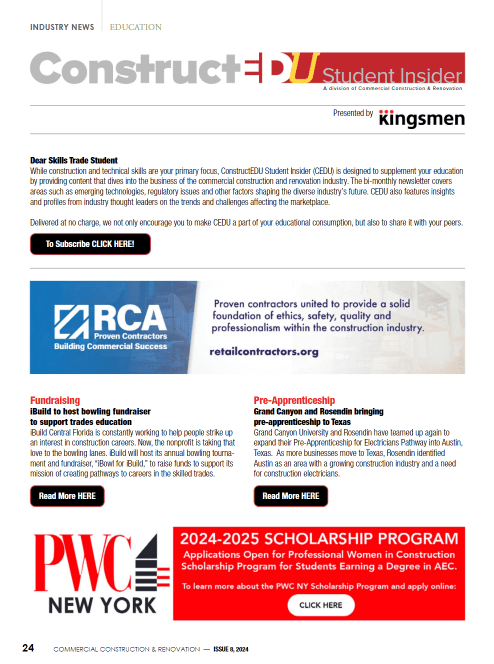Places that are visited frequently by a large number of people, like shopping centers, airports, offices, and other business establishments, are exposed to high traffic, and therefore, the surfaces bear the brunt of heavy traffic. Designing for such areas, therefore, needs an understanding of the appropriate materials for the areas that will be served. The first problem that arises is selecting materials to use for a day-to-day object that does not wear out soon.
Think about the floors, walls, and other surfaces in these zones and areas. One endures different stress compared to the other, ranging from the ability to handle the weight of furniture to resistance to shoe marks. It is therefore important, when designing a commercial space, to come up with a space that will not only be durable but also aesthetically appealing for a long time. However, there is the question of how one can select the materials that suit these criteria. Maybe it is time to have a look at what fundamental features should be the main interest of measurement.
Key Qualities to Look for in Materials
Specifically, durability should be a major factor when choosing materials for particular spots that experience a lot of traffic. For instance, precision stainless steel strip has high tensile strength and so appears light in weight, allowing it to be used on surfaces that are more likely to be used heavily. Durability is not a simple concept of how long a particular material will last but also measures a material’s ability to sustain its looks when under pressure.
Ease of cleaning is another important engineering design feature that must be considered when selecting and designing manufacturing equipment. Offices and retail stores should be able to have surfaces that are easy to clean and maintain, thus keeping them clean all the time. Also, one should examine how easily the material can be stained or scratched and how susceptible it is to denting. Floors or walls that cannot be easily damaged by the usual traffic or foot traffic are clean and do not show stains that can constantly make the area look old.
Finally, think about the safety aspects: Some of the examples are the materials that offer slip resistance or fire resistance which can greatly improve on the safety of the commercial spaces.
Comparing Material Options for Different Surfaces
Some fibers work well with some surfaces more than others, and the material you choose should correspond to the broader surface type you’re applying it to. As for the flooring, some types are common where lots of traffic is expected, such as vinyl, tile, and concrete. For instance, vinyl material has features such as durability and a variety of finishes, and this makes it possible for a business to design its floor without compromising on quality. It’s quite different from concrete because this material is very strong and brings a contemporary appearance to some industrial buildings.
In some cases, walls can be designed by applying such materials as stainless steel bar because of their solidity and resistance to scrapes. These bars can be installed in areas that may be subjected to impact, such as corridors, stairwells, or any other place of need. Ceilings are also an important factor to consider in a building in view of the quality of the acoustics in a place, which may include an office space or restaurant. Within such places, the noise pollution issue can be solved using acoustic tiles to ensure that the working environment, as well as the shopping environment, is comfortable for the employees and customers.
Material Selection Based on Specific Industry Needs
As it has been established earlier, industries have their specifications depending on the material to be used. For example in the retail industry, the materials chosen should be able to endure the many foot traffic especially around the shopping aisles but at the same time add to the interior décor of the store. Laminated hardwoods and vinyl floors are also preferable as they are also hard wearing besides having a neat looking surface.
In offices, specific types of fabrics that help decrease sound while providing comfort are crucial. Carpet tiles are widely used in workplaces because they are able to reduce the level of sound and offer a more comfortable surface than a hard floor. On the other hand, industries such as hospitality and the food industry require material that has to be easily washable and, most preferably, very easy to sanitize. Among the materials that should be used in zones where hygiene is essential, non-absorbent materials such as ceramic tiles and stainless steel worktops for kitchens and dining areas are recommended.
Environmental Impact and Sustainability
Sustainability ceased to be an option for marketing hype; it became one of the major factors when choosing materials for commercial property. More firms are turning to sustainable products that meet the standards of being able to be used for a long time without being replaced while protecting the environment. Some of the more sustainable choices today include using materials including but not limited to cork, bamboo, or even recycled rubber, among others.
Also, sustainable materials commonly provide savings in energy use and cost price. For instance, wall insulation can make a building more energy efficient by reducing the costs of heating and cooling. It has also been proven that selecting materials that are environmentally friendly not only benefits the environment but also reduces expenditure in the long run. Indeed, the rate at which commercial buildings opt for these options continues to rise as both form and sustainable practices are considered.
Cost and Budgeting for Long-Lasting Materials
When selecting furniture and detailing for areas that will get a lot of traffic, you have to look at the long-term; one may go for the cheaper products, but in the long run, they will spend a lot of money on repairs and replacements. It is well known that better materials and technologies require more money at the beginning, but in the long run, you will save money.
For instance, even when using accurate Stainless Steel Strip or Stainless Steel Bar there might be a relatively high cost. But since they may last longer and need no frequent replacement, they prove cheaper than the former in the long run. This is especially the case in areas where movement is predominant and hence the varied traffic puts a lot stress on the floor.
Here are a few things to consider when budgeting for materials:
- Initial cost vs. lifespan: Some of aspirations have a clear cost implication for example, a higher initial cost may result in fewer replacements in the future.
- Maintenance: Some of the materials require normal washing or some sort of treatment to be done. That should be taken into consideration especially when planning the resources to use when tackling the activity.
- Bulk purchasing: If this is required in big quantities, then going in for bulk purchase would reduce the overall price.
As you shall discover, lack of proper strategic planning of your financial resources might cost you a small fortune, and your space’s appearance might not be as optimal as you would like it to be.
Final Thoughts
Choosing the right materials for your commercial buildings’ flooring is one of the most important decisions that impact the appearance, functionality, durability, and expenses of the place. This means that you will always be sure of getting a long-lasting material that is easy to clean and one that can stand the rigors of society’s use. Each industry may have specific needs, but the goal remains the same: selecting those that can easily cope with the traffic throughout while at the same time being economically cheap to maintain.
Just consider how using high-quality material in your flooring, walls, or any other area will save efforts and money tomorrow by not having to refurbish them frequently, and ensure you keep everyone in your environment safe and impressed for many years. The way that you go about investing will mean your investment will go on helping your business for as long as possible.









 The 2024 virtual Men’s Round Table will be held Q4, 2024, date TBD.
The 2024 virtual Men’s Round Table will be held Q4, 2024, date TBD.
















